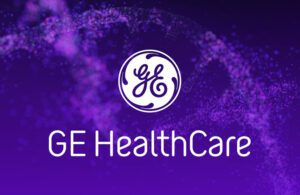 GE (NYSE: GE) has filed a Form 10 registration statement with the SEC as aims toward completing a GE HealthCare spinoff in early 2023.
GE (NYSE: GE) has filed a Form 10 registration statement with the SEC as aims toward completing a GE HealthCare spinoff in early 2023.
With $17.6 billion in annual revenue and 51,000 employees, GE HealthCare will remain a major medtech business. (Check out our recent Medtech Big 100 report on the world’s largest medical device companies.) The plan is for GE HealthCare to stay headquartered in Chicago. It has filed with the Nasdaq exchange to trade under the symbol GEHC.
“This is a milestone day for the GE HealthCare team, who is dedicated to our mission to create a world where healthcare has no limits,” GE HealthCare CEO Peter Arduini said in a news release out yesterday. “We believe we have a clear path to deliver precision innovation for our customers and their patients while accelerating growth and optimizing our business as a standalone company.”
GE will retain up to 19.9% of GE HealthCare’s outstanding shares following the spinoff. The plan is for the present GE to eventually become three publicly traded companies: GE Aerospace, GE HealthCare and GE Vernova.
Challenges for the new company
GE HealthCare could emerge from the spinoff with more than $15 billion in debt, according to the Form 10. (It’s common for companies spinning out of larger parents to start out with debt. For example, spine and dental tech company ZimVie (NASDAQ:ZIMV) started out with $500 million in debt when it spun out of Zimmer Biomet (NYSE:ZBH) early this year.)
GE HealthCare’s debt will include $10.2 billion in senior notes and term loans. GE also expects to transfer $5.2 billion in net pension and other postretirement plan liabilities to the spinoff.
The new company will also face the same macroeconomic headwinds that many medical device companies are presently facing. Medtech companies are grappling with supply chain disruption, risks involving the COVID-19 pandemic and more.
The Form 10 lays out GE HealthCare’s strategy for growth going forward:
- Drive precision innovation by taking advantage of opportunities, including digitizing healthcare; connecting care across diagnostics, therapy, and monitoring; and serving across care pathways and sites of care.
- Accelerate growth through investing in innovation, pursuing a disciplined capital allocation strategy, and enhancing commercial execution.
- Optimize GE HealthCare’s operating model through a simplified, more decentralized structure.
GE HealthCare earned $874 million off of $8.8 billion in sales during the first six months of 2022, representing a bottom-line slide of 25% on a top-line decline of 1.6% compared to the first six months of 2021.
GE HealthCare’s four businesses
The new company will have four businesses — Imaging, Ultrasound, Patient Care Services and Pharmaceutical Diagnostics.
Imaging’s offerings include CT, MR, molecular imaging, X-ray, women’s health, image-guided therapies, enterprise imaging software, service capabilities, and digital services. It brought in $9.4 billion in sales in 2021, a 5% increase from the year before.
The Ultrasound business sells consoles and probes, handheld devices, intraoperative imaging systems, visualization software, service capabilities, and digital services. It saw $3.2 billion in revenue last year, up 17%.
Patient Care Services includes monitoring, anesthesia and respiratory care, maternal infant care, and diagnostic cardiology, as well as consumables, service capabilities, and digital services. It generated $2.9 billion in sales in 2021, down 21% as demand related to the COVID-19 pandemic moderated.
The PDx business supplies diagnostic agents to the global radiology and nuclear medicine industry. It saw $2.0 billion in revenue last year, representing a 13% increase.
GE HealthCare invested $816 million in research and development in 2021, a 1% increase from 2020. But it has boosted R&D spending so far this year. The healthcare business spent $495 million on R&D during the first six months of 2022, up more than 26% from the same period a year ago.